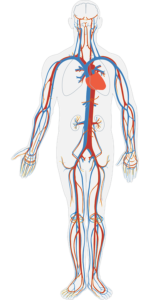 You’ve probably heard the term aneurysm before, but what is an aneurysm exactly and how can it be treated?
You’ve probably heard the term aneurysm before, but what is an aneurysm exactly and how can it be treated?
Artery walls are typically thick and muscular, allowing them to handle a large amount of pressure. Weak areas can develop in the wall of an artery, which allows the pressure within the artery to push outwards, creating a bulge or ballooned area – also known as an aneurysm.
Aneurysms can form in any blood vessel, but they occur most commonly in the aorta, the major blood vessel supplying blood to the body.
Symptoms of an Aneurysm
Aneurysms can often go unnoticed and not provide any signs or symptoms. But if present, symptoms include:
- Tearing pain in the chest, abdomen, and/or middle of the back between the shoulder blades.
- Thoracic aneurysms may cause shortness of breath, hoarseness,cough (due to pressure on the lungs and airways), and difficulty swallowing (pressure on the esophagus)
- Rupture of an aneurysm can cause loss of consciousness, stroke, shock or a heart attack
Again, it’s important to note that some aneurysms do not present symptoms and may go unnoticed unless specifically tested for by a vascular specialist.
Treatments for an Aneurysm
The size of the aneurysm typically determines what treatment option is chosen by a vascular specialist.
For a small aneurysm, which is about 1.6 inches or smaller in diameter, a vascular specialist may suggest observation. The doctor will likely monitor the aneurysm with periodic ultrasounds. Surgery is rarely performed on a small aneurysm.
For a medium aneurysm, which is between 1.6 and 2.1 inches in diameter, a patient and vascular specialist will discuss the benefits of observation versus the benefits of surgery.
For a large aneurysm, which is larger than 2.2 inches, or a rapidly growing aneurysm, surgery will likely be required.
Endovascular Surgery
This surgery is a less invasive procedure than open surgeries. During the procedure, a vascular surgeon will attach a synthetic graft to the end of a catheter. The catheter is inserted through an artery in the leg and threaded up into the aorta. The graft is placed at the site of the aneurysm and reinforces the weakened section of the aorta to prevent the aneurysm from rupturing. This, in a majority of patients, will eliminate the need for additional procedures.
Aneurysm Prevention
To prevent a potential aneurysm, regular exams should be scheduled with your doctor to help monitor and track any changes in your health. Maintaining a healthy diet and exercising regularly are key roles in a healthy heart.
